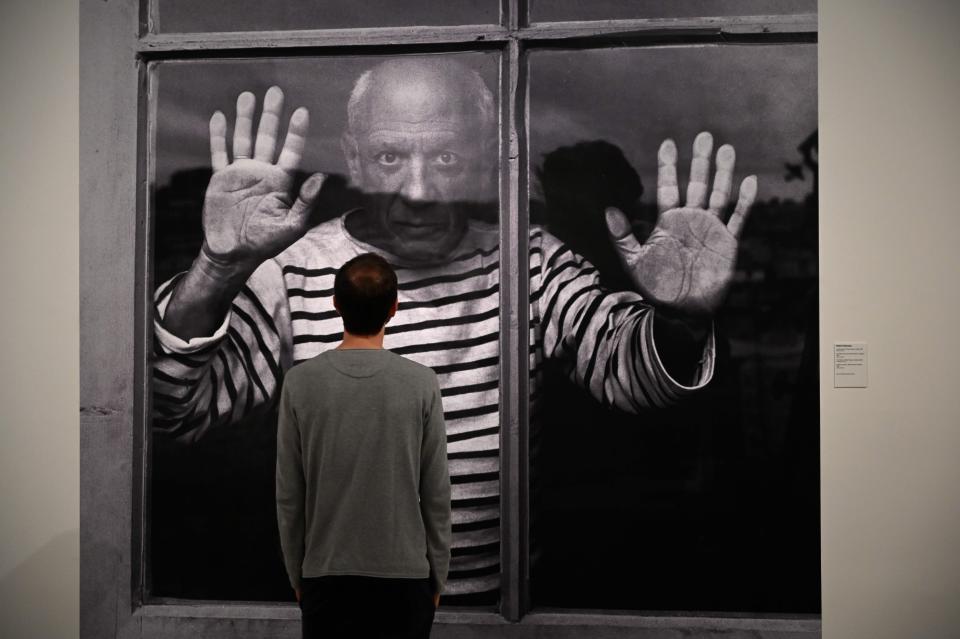When did Pablo Picasso die? Remembering the artists's life and death.
Social media users of today may recognize the viral “Okay I like it, Picasso” sound on TikTok, but what about the influential artist himself?
You might recognize the 20th-century painter's famous painting “Guernica,” created in the middle of the Spanish Civil War. The work has several interpretations but is generally known as a plea against the fight.
Or perhaps you're familiar with his melancholy painting “The Old Guitarist” or a few facts about his life, legacy and work.

When did Picasso die?
Picasso died on April 8, 1973, at the age of 91. His cause of death was a pulmonary edema, or fluid in the lungs, The New York Times reported. According to his obituary, Picasso died at his villa in France in the company of his second wife Jacqueline Roque.
Upon news of his death, crowds gathered outside Picasso paintings in the Museum of Modern Art. Several artists, political figures and historians shared tributes to The Times:
“I consider him not only the greatest painter of the century but also one of the greatest of Spaniards,” former Spanish Foreign Minister Julio Alvarez Del Vayo shared with The New York Times. “He was a great patriot, a defender of the rights of the Spanish people.”
“Unlike most artists, age did not slacken his energy; he worked on uninterruptedly to the end. We are fortunate in having been witness to his presence in our time,” said Alfred H. Barr Jr, the first director of the Museum of Modern Art and a Picasso scholar.
Who was Picasso? Life and legacy
Picasso was a Spanish artist often regarded as one of the most influential artists of the 20th century. Born on Oct. 25, 1881, in Malaga, Spain, Picasso began studying art at a young age as the son of a drawing professor. He attended the Royal Academy of San Fernando in 1897 but had a more enjoyable time studying his surroundings than in the classroom.
His work began gaining recognition after his first exhibit in Barcelona in 1900, and eventually appeared in the Spanish section of the Exposition Universelle in Paris, Britannica writes. It was on this months-long trip to Paris that Picasso first began experimenting in color, which would later become part of his signature style.
Picasso’s work is often categorized into four periods. The first, the Blue Period, consisted of sober blue and green shades. The Rose Period contained a rosy palette of oranges and pinks and often included circus imagery. The African-influenced Period heavily referenced traditional African sculpture. And his work in Cubism involved abstract images of broken, analyzed and re-assembled objects.
Picasso is regarded as the creator of Cubism. It led to some of his most beloved work. He began working closely with George Braque during this time, who helped him develop Analytical Cubism.
“The Cubist painters rejected the inherited concept that art should copy nature, or that artists should adopt the traditional techniques of perspective, modeling, and foreshortening,” the Metropolitan Museum of Art writes. “They wanted instead to emphasize the two-dimensionality of the canvas.”
Lesser known than Picasso's work is his personal life, including his problematic treatment of women. He famously said women are either "goddesses or doormats."
A 21-year-old Fran?oise Gilot met Picasso when he was 61. The two began a decade-long affair and had two children. Her memoir about their relationship serves as a portrait of a man "who could be remarkably self-absorbed and cruel to those closest to him," The New York Times reports.
One biography reports Picasso once enlisted his friend, poet Guillaume Apollinaire, to help him kidnap a woman he was in love with. Another woman recalls feeling "fear" on an occasion where Picasso lunged at her. Marina Picasso, his granddaughter, recalled his attitudes toward women in her memoir, "Picasso, My Grandfather."
"He submitted them to his animal sexuality, tamed them, bewitched them, ingested them, and crushed them onto his canvas," she wrote. "After he had spent many nights extracting their essence, once they were bled dry, he would dispose of them."
Picasso’s most famous paintings
Picasso is thought to have made over 50,000 artworks in his lifetime, according to Britannica. Here’s a glimpse into some of his most well-known:
Guernica: An anti-war symbol, this painting was completed in 1937 as a reaction to the Nazi bombing of the Spanish Basque town of Guernica during the Spanish Civil War.
Weeping Woman: This painting of a crying woman was another Spanish Civil War era work. Guernica contains an image of a woman carrying her dead child, which Picasso built “Weeping Woman” from. According to Tate art museum, the figure is based on French photographer Dora Maar, who was Picasso’s lover and muse for a period. Les Demoiselles d’Avignon: This painting, influenced by Iberian and African art, depicts five naked women. The title of the painting is an homage to a street in Barcelona known for brothels. This painting caused a stir of controversy, as other artists and onlookers were outraged at the taboo design of female bodies and faces.
The Old Guitarist: Picasso crafted this painting of a blind musician in his “Blue Period,” during which he stuck to “cold, monochromatic blue palette, flattened forms, and emotional, psychological themes of human misery and alienation,” according to the Art Institute of Chicago.
Just curious for more? We've got you covered
USA TODAY is exploring the questions you and others ask every day. From "When did women get the right to vote?" to "Who has the biggest military?" to "Who is the youngest Olympian?", we're striving to find answers to the most common questions you ask every day. Head to our Just Curious section to see what else we can answer for you.
This article originally appeared on USA TODAY: When did Picasso die? Artist's death, life, and legacy explored.
